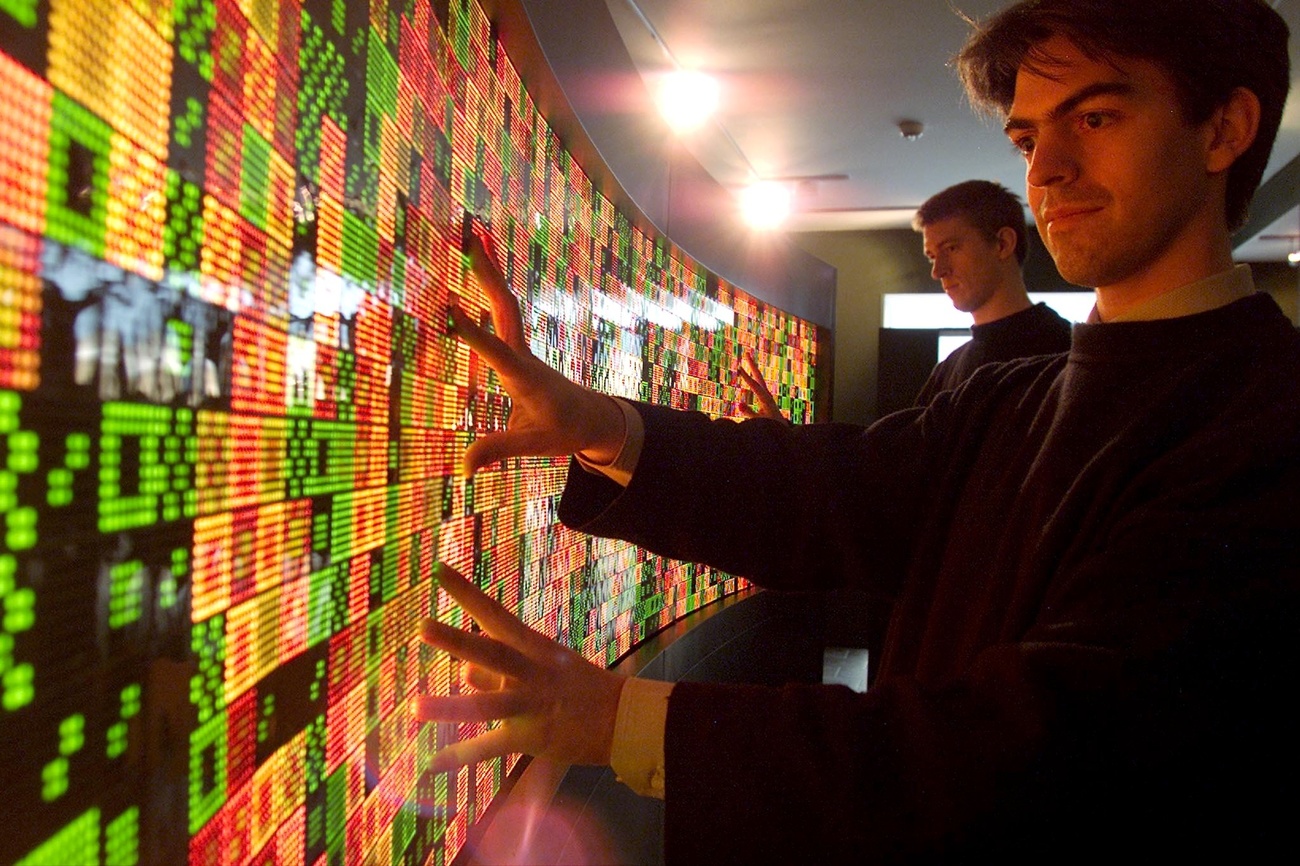
Biowall: the self-repairing, self-cloning computer

Scientists in Lausanne have been inspired by biology and genomics to build the computer of the future.
Computer scientists at the Federal Institute of Technology (EPFL) have taken their inspiration from nature. The Biowall – a 6 square metre concave wall – is the closest a computer has ever been to resembling a living organism.
This “bio-inspired” supercomputer, then, is embryonic in more ways than one.
The Biowall, a mosaic of 3,000 flashing electronic modules – or artificial molecules – has been developed to make it attractive and user-friendly. But the technology behind it constitutes a dramatic sea-change in the way we think about computing.
“Looking at computing from a biological point of view gives us an entirely new perspective,” says Gianluca Tempesti, a key member of the EPFL team that has devised the Biowall.
Electronic genome
Like all living things, this system has two special qualities that set it apart from traditional circuitry: it can repair itself and it can replicate itself.
“In nature, everything starts from a single cell, which contains the genome, and that information is used to build an entire organism,” Tempesto told swissinfo.
“Essentially, what we’ve done is to create electronic stem-cells and an electronic genome,” he explains.
The Biowall is the star exhibit at a new science museum, the Villa Reuge in Sainte-Croix. Its first exhibition is “The Living Object”. Alongside the ancient automata and robots, the wall offers a vision of the future.
For the benefit of the public, it has been made large and interactive, even if the technology can be reduced to the size of a microchip.
Back-up cells
As in our bodies, the Biowall contains a collection of cells. Each contains all the information necessary to keep the system alive. Crucially, there is a supply of back-up cells, which are activated only when a fault is detected.
The visitor is invited to touch the wall, and thus “injure” it. The computer reacts by reorganising its cells, replacing the damaged molecules and continuing its programme.
“If we cut ourselves, it does not stop our bodies from functioning,” Tempesti says.
“No cell is indispensable. The machine survives even if cells die, because there are always spare cells to replace them,” he adds.
Fault-tolerance
This “fault-tolerance” is essential in what are known as “mission-critical systems”, where one fault could have catastrophic consequences – in a nuclear power station, in aviation or in space missions, for example.
Currently the fault-tolerance methods used in these fields are crude – with possible three copies of an entire system as back-up should the main circuit crash.
The appeal of a system that can repair itself, then, is evident. “It’s astounding the amount of damage our system can take and keep in working compared to what conventional circuits can do,” Tempesti says.
But surely there is something slightly sinister about a computer that can repair and clone itself? Rather than envisaging a day when computers sel-replicate to take over the world, Gianluca Tempesti prefers to see this bio-inspired technology being put to good medical use.
Cyborgs
He points out that already scientists in Japan have developed artificial hands where the electonics are linked up to nerve endings.
“I can see it perhaps being used to repair spinal chords, or restore lost neural functions,” he says, raising the prospect of people becoming Cyborgs. “This is pure science-fiction at the moment, but we are starting to see integrated circuits being interfaced with living tissue.”
by Roy Probert

In compliance with the JTI standards
More: SWI swissinfo.ch certified by the Journalism Trust Initiative















![The four-metre-long painting "Sonntag der Bergbauern" [Sunday of the Mountain Farmers, 1923-24/26] had to be removed by a crane from the German Chancellery in Berlin for the exhibition in Bern.](https://www.swissinfo.ch/content/wp-content/uploads/sites/13/2025/12/01_Pressebild_KirchnerxKirchner.jpg?ver=a45b19f3)













You can find an overview of ongoing debates with our journalists here . Please join us!
If you want to start a conversation about a topic raised in this article or want to report factual errors, email us at english@swissinfo.ch.